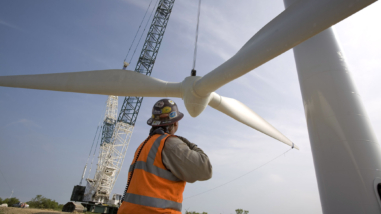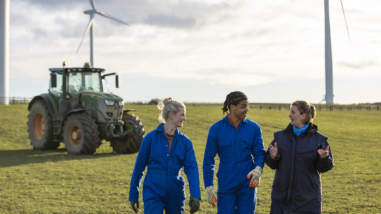 Open Rivers Fund General Statements of Support
Open Rivers Fund General Statements of Support
Barton “Buzz” Thompson, Jr., Chair, Resources Legacy Fund Board of Directors, and Robert E. Paradise Professor in Natural Resources Law at Stanford Law School:
“Under the right circumstances, returning free flows to dam-impaired rivers can improve water quality; solve safety, sedimentation, and obsolescence problems; and enhance habitat for important aquatic and terrestrial species, while strengthening flood control, water supply, agricultural production, energy production, recreational, and other economic uses.”
Gordon Grant, Research Hydrologist, U.S. Forest Service, Pacific Northwest Research Station and Courtesy Professor, College of Earth, Ocean, and Atmospheric Sciences, Oregon State University:
“Several decades of scientific research on the consequences of dam removal across the country have revealed that, in general, rivers can quickly reclaim their forms, profiles, and ecological functions following removal of dams. In some cases, rivers virtually erase all traces of dams that have stood for a century or more in a matter of a few years. We have learned that, done properly, dam removal can be an effective and useful method of river restoration.”
U.S. Senator Dianne Feinstein, California:
“The Hewlett Foundation’s support for the Open Rivers Fund will help restore rivers throughout the Western United States. Addressing our aging water infrastructure will both improve the nation’s waterways and strengthen surrounding communities that benefit from healthier rivers.”
Frank Magilligan, Professor of Geography, Dartmouth College:
“Dam removal is an important and effective way to restore river flows in beneficial ways, from decreasing floods caused by ageing and deteriorating structures overwhelmed by sediment, to enhancing local recreation, and improving local fisheries. Working with dam owners and local communities to remove dams that exacerbate flooding, damaging farm fields and roads, or replacing them with structures that achieve a better balance, can have a tremendous and positive impact on those communities, which in some cases have struggled for years with the effects of outmoded or unnecessary structures.”
Dave Gutierrez, Chief, Division of Safety of Dams, California Department of Water Resources:
“Over half of the dams in California are over 50 years old and we must continue investing in infrastructure to ensure they are maintained and operated safely. This investment could be in the form of repairs or improvements to the dams or in some cases, as our values and needs change, removal when they are no longer needed or too expensive to maintain.”
Community Statements of Support for Matilija Dam Removal Project
U.S. Representative Julia Brownley, California’s 26th Congressional District:
“The Matilija Dam Ecosystem Restoration Project is critical to restoring the Ventura River ecosystem and the recovery of the California steelhead. As a longtime advocate for the project, I am very pleased that the project has gained additional support. Cross-sector partnerships between the public and private sector can help us tackle large ecosystem restoration projects and serve as a model for other river conservation efforts nationwide.”
Steve Bennett, Supervisor, First District, Ventura County:
“One of the most powerful things about the Matilija Dam removal effort is the broad level of support it has received from a diverse array of local stakeholders. Citizens, environmental groups, businesses and all levels of government have stepped forward to speak out in favor of dam removal. At the County level, we know that removing the dam will provide immense benefits to all of our citizens.”
Sam Schuchat, Executive Officer of the California State Coastal Conservancy:
“Not only is the removal of Matilija Dam critical to survival of the Southern California Steelhead, it’s also crucial to restoring ecosystem function in the watershed. It will put sands on Ventura beaches and restore habitat corridors. The Coastal Conservancy is optimistic about the future of this vital project and welcomes the involvement of RLF’s Open Rivers Fund and the Hewlett Foundation.”
Paul Jenkin, Ventura campaign manager for the Surfrider Foundation and leader of Matilija Coalition: “After more than 15 years of discussion, we finally have a plan to remove Matilija Dam. When this dam comes down we will see our beaches widen, the fish come back, and an amazing chance to visit the dam site and witness large scale river restoration. Plus, with upgraded downstream infrastructure, our community will be better protected from the impacts of flood and drought.”
Mark Capelli, South Central California Recovery Coordinator, National Oceanic and Atmospheric Administration:
“Removal of Matilija Dam is one of the most ambitious recovery actions identified in NMFS’ Southern California Steelhead Recovery Plan. The dam’s removal would be a significant milestone in recovering the endangered steelhead the Ventura River, and it would provide an important incentive to similar efforts in other watersheds which continue to be adversely affected by non-functional dams.”
Brian Brennan, director of BEACON: Beach Erosion Authority for Clean Oceans and Nourishment
“BEACON, as a Ca. Joint Power Authority representing six coastal cities, along with the Counties of Ventura and Santa Barbara, views the removal of Matilija Dam as a major step in the restoration of the natural systems that ensure coastal resiliency in the face of ongoing sea level rise.”
Julie Tumamait, tribal chair of the Barbareño-Ventureño band of Mission Indians, who have lived in the Ojai Valley and surrounding region for thousands of years:
“The land should not be ours to do as we wish. When we go against nature and alter the land and water someone or something suffers along the way. It’s time we right this wrong and restore the natural order of life. And we will be the change we see.”
David White, Project Coordinator and Teacher, Once Upon a Watershed:
“How can we expect children to protect nature if they don’t know what it is? The Once upon a Watershed education program connects kids to nature and provides hands on experience restoring our wetlands, our watershed and our world.”
Diane Underhill, Friends of the Ventura River:
“The Ventura River Parkway is a tremendous value to the community. People are rediscovering this river and its environment through outdoor recreation on the parkway trail. The Matilija Dam removal will deliver the final missing piece to improve this important restoration project and further help reconnect people to this vital natural asset.”
Candice Meneghin, Conservation Manager, Southern California Region, CalTrout:
“CalTrout’s mission is to ensure resilient wild fish in healthy waters for a better California – finding solutions to complex resource issues that balance the needs of fish and people. We see the Matilija Dam Ecosystem Restoration Project as a flagship project to spearhead the way for large scale dam removal in southern California and statewide, improving the odds and ushering in an a new era of recovery for the federally endangered Southern California steelhead. This project will restore fish passage by reconnecting over 30 miles of prime spawning and rearing habitat, allowing steelhead to return home once again.”
Community Statements of Support for Rogue River Basin Project
Sam Whitridge, Managing Director, Rogue Basin Partnership:
“Hundreds of dams, road culverts, and other structures prevent fish from reaching hundreds of miles of spawning and rearing habitat throughout the Rogue Basin. Several member organizations of the Rogue Basin Partnership are building on the legacy of successful, mainstem Rogue dam removal by improving migratory fish access in the streams that flow into the Rogue. It is a logical and important next step in this river restoration effort.“
Brian Barr, Executive Director, Rogue River Watershed Council:
“We are tremendously grateful for the support from the Open Rivers Fund. The funding will help us to move forward with our efforts to work with landowners and other community groups on projects such as the Beeson-Robison Dam project that will restore access to salmon and steelhead spawning streams. Providing access to more, higher elevation habitat along Wagner Creek will translate to more successful spawning and higher juvenile fish survival. Implementation of the Beeson-Robison project, and other similar projects throughout the Rogue Basin, will result in a greater availability of salmon and steelhead in the Pacific Ocean and Rogue River, and will also result in more resilient fish populations.“
Bob Hunter, Board Member, WaterWatch:
“The internationally renowned Rogue River is one of the Pacific Northwest’s most important salmon strongholds, and offers one of the best chances to maintain salmon and steelhead for future generations. Removing barriers to fish passage is one of the most effective ways to enhance and protect fish runs, and the Open Rivers Fund support offers a great opportunity to build on the great river restoration work that has been done in the Rogue Basin.“
Robert Hackett, irrigator served by Beeson-Robison diversion dam:
“I support replacing the old Beeson-Robison diversion dam. It will help address the issue of fish passage and allow fish to reach cooler water during lower summer stream flows.“
Jason Robison, Director of Natural Resources, Cow Creek Band of Umpqua Tribe of Indians:
“The Cow Creek Band of Umpqua Tribe of Indians is committed to restoring fish populations within its ancestral area which includes much of the Umpqua and Rogue Rivers and their tributaries. The Tribe works with conservation organizations, energy companies, federal government agencies, states, other tribes, and citizens to evaluate barriers to improve fish passage throughout its ancestral area. Addressing habitat connectivity in the Rogue River Basin is a high priority for many of the Tribe’s partners, including Rogue Basin Partnership and Rogue River Watershed Council. Increasing connectivity through small barrier removal is cost-effective approach to protecting and restoring anadromous fish populations. The fish passage work being conducted by our partners in the Rogue River Basin is an important step in enhancing connectivity while restoring the natural processes capable of sustaining healthy anadromous fish populations. This work aligns well with several of the Tribe’s strategic priorities.“
Katie Briggs, Managing Director, Laird Norton Family Foundation:
“The Laird Norton Family Foundation welcomes the financial and leadership investment from the Open Rivers Fund as an important partner in pursuit of an ambitious community-driven vision. We are thrilled to see this new funding commitment in a watershed we care deeply about.“
Kendra Smith, Director, Oregon Model Watersheds, Bonneville Environmental Foundation:
“The Bonneville Environmental Foundation is grateful to see our partners in the Rogue Basin, become a part of the Open Rivers Initiative. With years of intense collaborative effort invested, the Rogue partners are poised to accelerate their collective impact, by addressing climate resiliency and helping their streams run wild, unthethered, and free.“
John MacDiarmid, Board Member, Rogue Flyfishers:
“Dam removal in the Rogue Basin has been a boon for our local salmon and steelhead runs, as well as for the many fishermen who live in and visit the Rogue Basin. The boost in fish populations has really been exciting. It’s important that we build on the good work already done, continue to remove obsolete dams, reinforce this salmon and steelhead stronghold, and pass on this river to future generations in better shape than we found it.“
Will Volpert, owner, Indigo Creek Outfitters:
“As a rafting company owner who spends as much time as possible on the Rogue River, I¹ve witnessed the benefits of dam removal in this basin first hand. The ongoing restoration of the river inspires a lot of excitement and curiosity in my guests, and it’s always a treat to be able to show folks the former dam sites and talk about the ways nature responds once we set the river free.”
Community Statements of Support for Nelson Dam Removal
Alex Conley, Executive Director, Yakima Basin Fish & Wildlife Recovery Board:
“Our locally-developed steelhead and bull trout recovery plans identify high priority actions that need to be taken to recover at-risk fish runs in the Yakima River Basin. One of the top priorities is providing unimpeded fish passage at Nelson Dam near the mouth of the Naches River. This project will allow the extensive habitat restoration work being done upstream in the Naches and its tributaries to reach its full potential.”
Ann Stephenson, Former President, Yakima Kayak Club:
“The Nelson Dam is a dangerous low-head dam that breaks up a beautiful and fun whitewater river run on the Naches River. We strongly support the plan to remove it and make the run passable for boaters, rafters and fish. This is a terrific way to work with a river rather than against it.”
Thomas O’Keefe, Pacific Northwest Stewardship Director, American Whitewater:
“Low-head dams create dangerous hydraulics that are an extreme hazard to paddlesports enthusiasts. Removing Nelson dam, which represented a barrier for both fish and safe navigation of the Naches River, reconnects the river in a manner that benefits the river ecosystem while enhancing opportunities for public use and enjoyment.”
Chad Stuart, Yakima Field Office Manager, Bureau of Reclamation:
“In the Yakima Basin Integrated Plan, various partners, such as the Yakama Nation, irrigation districts, NGOs, and many others, are working together to set priorities and solve problems. Nelson Dam removal and replacement is a City and County project, but because of the collaboration, this project will serve many needs that all will benefit from.”
Bob Carey, Strategic Partnerships Director, The Nature Conservancy:
“Floodplains by Design works because we have the technical tools to understand how rivers work and the experience to know we can deliver multiple benefits through collaborative efforts. We can invest in projects that work with rivers to promote long term public safety and river and fishery health.”



